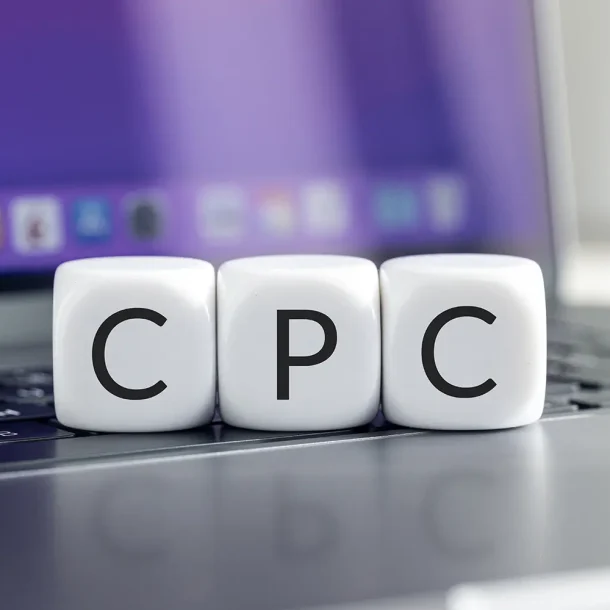
On-Page SEO: Improve Website’s Visibility and Get Rave Conversion Rates
On-Page SEO involves optimizing individual web pages to rank higher and earn more relevant traffic in search engines. Search engine optimization (SEO) is essential to any successful online strategy in today’s dynamic, competitive, and attention-short digital landscape.
Before delving into the specifics of SEO, you should first understand what is SEO? To ensure your website is visible to your target audience, on-page SEO is a powerful technique that can catapult it to the top of search engine rankings.
Search engine rankings refer to the position of your website in the search engine results page (SERP), with higher rankings indicating greater visibility and more organic traffic to your site.
Hold tight because we will reveal the ins and outs of on-page optimization and provide a detailed checklist to make your website pop like a neon sign.
Understanding On-Page SEO: Why It’s Important
Imagine this: you’ve spent a lot of time and effort developing a website that highlights your goods and services, written engaging content from the bottom of your heart, and spent a lot of money on its development.
Nevertheless, your labor of love will remain unnoticed by the target audience until you use effective on-page SEO.
On-page SEO aims to improve a website’s visibility in search engine results and the user experience on that specific page.
User experience refers to how a user interacts with your website and how easy and enjoyable it is for them to find the information they need.
Search engines can’t help but swoon over the well-balanced composition that includes everything from titles and meta descriptions to headings and content.
Why, though, is it significant?
A higher ranking increases your visibility, which in turn boosts traffic and the number of potential consumers or clients for your business.
This positive feedback loop, when harnessed through effective on-page SEO, has the potential to catapult your internet success to new heights.

Your Roadmap to On-Page Perfection
After establishing that on-page SEO is important, let’s dive into the practical side and start working on the specifics.
Here’s an all-inclusive guide that will transform your website from an online presence to a search engine powerhouse: the ultimate on-page SEO checklist.
1. The Fundamentals of Keyword Research: A Key to Success
Learning the language of your intended audience is a prerequisite to optimizing your pages for them.
Here is when researching keywords becomes useful.
You may find the most relevant and high-volume keywords that fit your business goals using tools like Ahrefs, Google’s Keyword Planner, and SEMrush.
When you have a list of possible keywords, you can start strategically adding them to your web pages, like:
- Title tags are the headlines in tabs and search engine results. Ensure they are captivating, factually correct, and incorporate your main keyword.
- Meta descriptions can give users a quick idea of your page’s content. Take time crafting them, using your target keywords, and writing captivating material to promote clicks.
- Classification (H1, H2, H3), Use headings that contain pertinent keywords to break up the text into sections that are easier to digest.
- Article body, use keywords naturally throughout the content of your page, but don’t stuff them; search engines may detect keyword stuffing very quickly.
2. Optimizing Content: The Heart of Your Pages
Although keywords are significant in on-page SEO, they are far from the only factor.
As they learn to better serve their users, search engines are giving more weight to interesting and useful material.
Make sure your material is optimized for both human readers and search engines by following these tips:
Readability: To make your information easier to skim and absorb, try breaking it up with short paragraphs, bullet points, and subheadings.
Components of Multimedia: To improve the user experience and break up pages heavy on text, include appropriate photos, videos, and infographics.
Ensure that these multimedia components are optimized by using descriptive file names, alt tags, and captions that include your target keywords.
Internal and External Hyperlinks: To demonstrate the value of your material and build your site’s credibility, link to other pertinent pages and to trustworthy external sources.
Modernity: Search engines prefer websites that are frequently updated, so make sure to update your information often to keep it relevant and up-to-date.
3. Technical Optimization: the Backbone of Your Website
Despite the importance of on-page components, technical optimization holds your website together and makes it search engine-friendly.
Some important technical considerations are as follows:
Structure of the site: For search engines to easily scan and index your content, your website’s architecture should be logical and user-friendly, with easy navigation and a hierarchical structure.
Page load time: Slow page load times result in frustrated visitors and lower search engine rankings.
Ensure your site loads quickly by optimizing pictures, minifying code, and using caching strategies.
Web design that works flawlessly on any device: More and more people are accessing the internet from their mobile devices.
Thus, it’s crucial that your website can adapt to different screen sizes.
Schema markup: Use structured data markup, a standardized format for providing information about a page and classifying its content, to improve your search engine rankings.
It gives search engines more information about your products, events, and reviews, making it easier for them to understand and index your content.
4. Analytics and Tracking: How to Evaluate Your Performance
Monitoring and analyzing your performance is vital if you want to refine your approach and remain ahead of the competition.
Optimizing your pages is just the beginning. Google Search Console and Google Analytics are great tools for tracking how well your website is doing. You may use these to:
1-Find out how people find your site (via organic search, paid ads, social media, etc.) and modify your strategy appropriately.
2-User behavior: To enhance the user experience, examine engagement data such as time on page, exit pages, and bounce rates. Bounce rates refer to the percentage of visitors who leave your site after viewing only one page, which can indicate that your content is not engaging enough or that your site is not user-friendly.
3-Keep an eye on where your target keywords are in the rankings and adjust your content and optimization strategies to capitalize on changes and new developments.
4-Rates of conversion: Monitor key conversion metrics, such as form submissions or e-commerce transactions, which are actions that you want your website visitors to take, to measure the effectiveness of your on-page optimization.
It is crucial to monitor and analyze your website’s performance regularly to make data-driven decisions and optimize your on-page SEO strategy for maximum impact.

Practical Case Studies: Implementing On-Page SEO
Here are a few inspiring examples of real-world success that demonstrate the power of on-page SEO.
Let’s take a look at some real-life success stories that demonstrate the power of on-page SEO:
HubSpot Blogging Strategy
The immensely profitable blogging strategy of industry-leading marketing and sales software provider HubSpot is largely responsible for the company’s meteoric rise.
Marketers and professionals all across the globe rely on HubSpot as a reliable source of high-quality, keyword-optimized content.
With careful keyword optimization across titles, headers, and body text, their blog pieces shine in on-page SEO.
They also employ internal linking to keep visitors interested and to drive traffic to other parts of their site.
Semrush’s Keyword Research Magic
The famous SEO and digital marketing toolkit Semrush exemplifies the power of well-executed keyword research to increase exposure and traffic.
All of the essential material on their website is optimized around keywords that are very relevant and have a large volume of searches in their sector.
Semrush has risen to the top of search engine results for a myriad of competitive phrases, drawing in a constant flow of organic visitors and solidifying its position as an industry leader in digital marketing, all thanks to its robust in-house keyword research tools.
Putting Mobile Users First: Airbnb’s Strategy
The prominent vacation rental site Airbnb made mobile friendliness an integral aspect of its on-page SEO strategy because it understood its significance early on.
Its website is optimized for all devices, ensuring a smooth experience on desktops, laptops, tablets, and smartphones.
Airbnb has thrived and expanded in the cutthroat travel business by emphasizing mobile optimization. This makes all of its listings and material easily accessible to users wherever they may be.

Brief Must Have On-Page SEO Checklist For Every Business
Here is a quick on-page SEO checklist that every company should use to improve their search engine rankings:
Keyword Research
- Find out what terms your ideal customers use.
- Use keyword research tools like SEMrush, Ahrefs, or Google Keyword Planner.
- Consider the user’s goal when searching and use terms to help you achieve it.
Title Tags
- Make sure to incorporate your main keyword within the title tag.
- Make sure the title tag is captivating and brief (preferably less than 60 characters).
- Keep title tags unique across pages and refrain from filling them with keywords.
Meta Descriptions
- Write captivating meta descriptions (between 155 and 160 characters) with relevant keywords.
- Give a quick rundown of what’s on the page.
- Drive traffic from search results by enticing users to click through.
Headings (H1, H2, H3)
- Heading 1 should contain your core keyword.
- Organize your material using appropriate H2 and H3 subheadings.
- Be careful to use semantic markup and a suitable heading hierarchy.
Content Optimization
- Use appropriate keywords in a natural way all over the material.
- Aim for a word count of 300 words or more (more is typically better).
- Use visuals (photos, films, infographics) to bolster the text.
URL Structure
- Create URLs that are both descriptive and keyword-rich; for instance, example.com/category/primary-keyword.
- Keep URLs brief, easy to understand, and readable.
- Ensure that session IDs, parameters, and superfluous subdirectories are avoided.
Internal Linking
- Include relevant and associated links on your website.
- Anchor text should be descriptive and contain relevant keywords.
- Stay away from optimizing too much or linking too much internally.
Image Optimization
- Be sure to give your photographs descriptive and keyword-rich file names.
- Make sure to include descriptive alt text that fits the image content.
- Reduce the file sizes of images so they load faster.
Mobile-Friendliness
- Make sure your website is compatible with mobile devices.
- Download Google’s Mobile-Friendly Test app and give your pages a once-over.
- Make sure your site loads quickly on mobile and desktop users alike.
Schema Markup
- Use structured data markup (such as Schema.org) to improve search snippets.
- Articles, products, events, and company information can all be marked up.
- Use structured data testing tools such as Google’s to ensure your markup is valid.
Technical SEO
- Maintain a fast loading speed and excellent user experience on your website.
- Correct 404 errors, redirect chains, and broken links.
- Search engines can better index your site if you submit an XML sitemap.
Content Freshness
- Keep your website up-to-date with new, high-quality material.
- Review and revise previous content as needed.
- Monitor where search engine algorithms are heading and make adjustments as needed.

Final Thoughts
In the realm of ‘On-Page SEO,’ understanding ‘Are SEO Services Worth It?’ is crucial as it highlights the impact of optimized content and structure on search engine rankings.
If you want your website to dominate the web and open doors to endless possibilities, you need on-page SEO. It’s more than just a buzzword; it’s a catalyst for success.
if you need complete guide of on page seo visit the link.
By optimizing your content, following technical best practices, and following the detailed checklist provided in this post, you may effectively reach your target audience and surpass your competition.
Remember that on-page SEO is more of a process than a final destination.
Prepare yourself for the onslaught of targeted traffic and prospective clients that is about to arrive by remaining alert, constantly assessing your progress and making adjustments to your approach.
Then why are you hesitating?
If you want your website to reach its maximum potential, use on-page SEO strategies, and see your online presence ascend to new heights, page by page, then Danabak agency is the agency for you.
SEO in Charlotte is a dynamic field that supports local businesses in improving their online presence, helping them effectively reach and engage with the vibrant and diverse community in one of North Carolina’s largest cities.
FAQs
What is the purpose of a meta description?
A meta description is a description of a website’s content that appears in search engine results.
Its goal is to encourage users to click on the link. The meta description ought to be captivating and contain pertinent keywords.
For on-page SEO, what is the optimal length of content?
Longer pieces that cover more ground and offer more value (often more than 300 words) tend to do better in search engine results. However, there is no hard and fast rule about word count.
For on-page SEO, why is it vital to optimize images?
Optimizing photos with informative file names, alt text, and appropriate file sizes can enhance page load speeds and search engine and user accessibility.
In on-page SEO, how does schema markup function?
If your content uses schema markup (structured data), search engines will be able to better interpret it and show it in rich snippets, which could lead to more clicks.
When is the optimal time to change the material on my website?
By consistently adding new, high-quality material, you can maintain your site’s relevance and demonstrate your authority to search engines.








